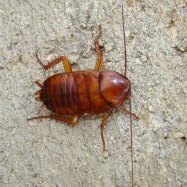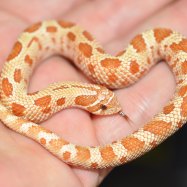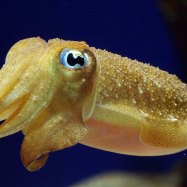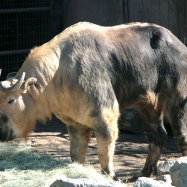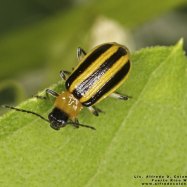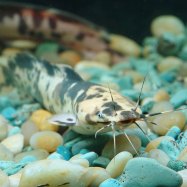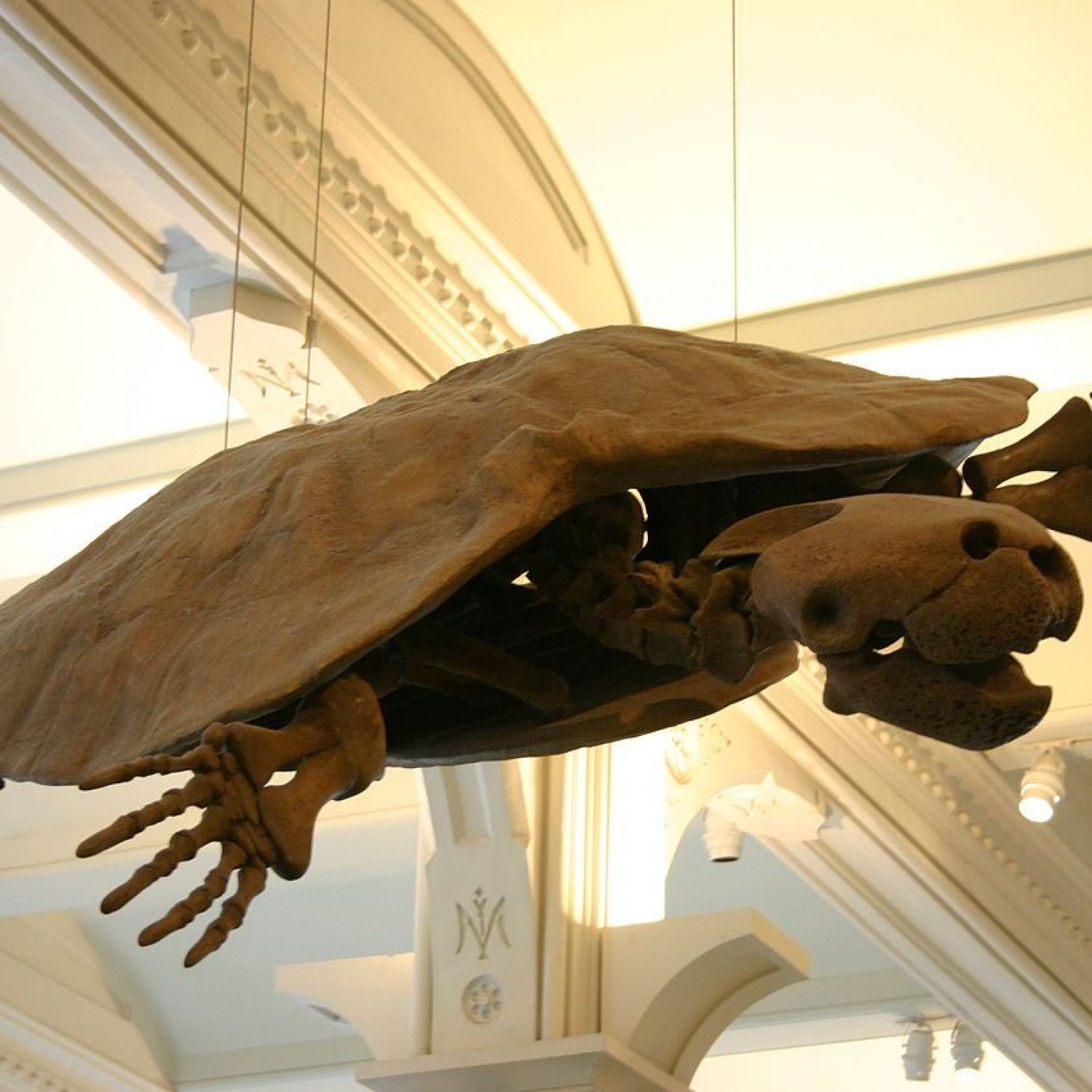
Stupendemys
Up to 3 meters (9.8 feet)
Meet Stupendemys, a massive freshwater turtle that roamed South America during the Miocene period. Fossils of this ancient reptile have been discovered in Venezuela and Brazil, measuring up to 3 meters long! This extinct turtle belongs to the family Podocnemididae and is a truly remarkable creature worth learning about. #Stupendemys #prehistoricanimals #freshwaterturtle
Animal Details Summary:
Common Name: Stupendemys
Kingdom: Animalia
Habitat: Freshwater rivers and lakes
The Unforgettable Stupendemys: A Giant Turtle from Ancient South America
Deep in the lush rainforests of South America, a prehistoric giant once roamed the rivers and lakes. It was a creature so colossal that it weighed over a ton and measured up to 3 meters long. Its name was Stupendemys geographicus, and it was one of the largest freshwater turtles ever to exist on our planet. Today, we look back in awe at this incredible animal and unravel its mysteries Stupendemys.A Journey through Time
Stupendemys, derived from the Latin words "stupendum" meaning "amazing" and "emys" meaning "turtle," was first discovered in the early 1970s in Venezuela by renowned researchers Edwin Colbert and Roland Muller. This gigantic turtle belonged to the Podocnemididae family, which is also the family of the popular Amazon river turtle or Arrau turtle, found in the same region today.Scientists estimate that Stupendemys lived during the Miocene and Pliocene epochs, roughly 13 million to 5 million years ago, making it an ancient species. Fossils of this remarkable creature have been found in both Venezuela and Brazil, giving us a glimpse into its geographical distribution.
Anatomy and Appearance
Stupendemys's most significant claim to fame was its massive size, weighing an estimated two tons and measuring up to 3 meters in length. It was bigger than any other turtle living today, including the critically endangered leatherback sea turtle, which can grow up to 2.4 meters.The giant turtle had a unique body shape, resembling that of a giant pancake. Its shell, also known as the carapace, was broad and flat, measuring up to 2 Sunset Ball Python.4 meters in width. The shell was made up of bony plates called scutes, which were fused together to provide protection to the turtle's vital organs. Scientists believe that the carapace of Stupendemys was useful for heat regulation, allowing the giant turtle to maintain its body temperature in the warm South American climate.
Unlike most modern turtles, Stupendemys had a distinctive and elongated head, which gave it a snake-like appearance. The turtle's jaws were incredibly powerful, enabling it to feed on tough and fibrous plants. Its feet were also adapted for an amphibious lifestyle, with partially webbed toes to help it swim efficiently.
Habitat and Diet
Stupendemys lived in freshwater ecosystems like rivers and lakes, mainly in the tropical forests of South America. Its preferred habitat was likely shallow and calm waters, where it could find an abundant supply of vegetation to munch on.As a herbivorous species, Stupendemys had a mostly vegetarian diet, feasting on a variety of aquatic plants,including water lilies and grasses. Its powerful jaws and sharp beak could easily crush and shred through tough vegetation, making it a formidable herbivore.
Life Cycle and Behavior
Not much is known about the life cycle and behavior of Stupendemys, as all that remains of this remarkable creature are fossils. However, researchers have speculated on several possibilities based on its anatomy and behavior of modern-day turtles.Due to its massive size, it is believed that Stupendemys was a slow-moving animal, spending most of its time in the water, only coming onto land to lay eggs or bask in the sun. It was probably solitary, and it is unlikely that these giant turtles had many predators due to their size.
The female Stupendemys was responsible for laying eggs, possibly digging a hole on land to bury them in. Like most freshwater turtles, it is believed that Stupendemys had a long lifespan, possibly living for several decades.
Extinction
As a species that existed millions of years ago, it is not surprising that Stupendemys is now extinct. However, the reasons for its extinction remain a mystery. Some theories suggest that changes in the environment could have played a significant role in the species' disappearance. The rise of the Andes mountains, which may have altered the rivers and lakes where Stupendemys lived, is one possibility.Another theory suggests that the arrival of predators, such as the crocodilian Purussaurus, which grew up to 11 meters in length, could have contributed to the turtle's extinction. However, there is no conclusive evidence to support these claims, and the exact cause of Stupendemys's extinction remains a mystery.
The Legacy of Stupendemys
Despite its extinction, Stupendemys has left a lasting impact on the world of paleontology. Its fossils have helped scientists understand the evolution and diversity of turtles and their ecological significance.Scientists have also been able to gather information about the ancient ecosystem in which Stupendemys lived, providing insight into the climate and geography of South America millions of years ago. The discovery of Stupendemys also highlights the need for conservation of modern-day turtles, many of which are facing severe threats due to human activities.
Conclusion
In the world of animals, there are species that capture our imagination and leave us in awe, and Stupendemys is undoubtedly one of them. This colossal turtle, with its massive size and mysterious disappearance, continues to fascinate researchers and nature enthusiasts alike.As we delve deeper into the history of our planet and its inhabitants, discoveries like Stupendemys remind us of the incredible diversity that existed and how every creature, big or small, has played a role in shaping the world we know today. The legacy of Stupendemys lives on, reminding us to protect and appreciate the unique and beautiful creatures that still roam the earth.

Stupendemys
Animal Details Stupendemys - Scientific Name: Stupendemys geographicus
- Category: Animals S
- Scientific Name: Stupendemys geographicus
- Common Name: Stupendemys
- Kingdom: Animalia
- Phylum: Chordata
- Class: Reptilia
- Order: Testudines
- Family: Podocnemididae
- Habitat: Freshwater rivers and lakes
- Feeding Method: Herbivorous
- Geographical Distribution: South America
- Country of Origin: Venezuela, Brazil
- Location: Fossils have been found in Venezuela and Brazil
- Animal Coloration: Unknown
- Body Shape: Massive size
- Length: Up to 3 meters (9.8 feet)
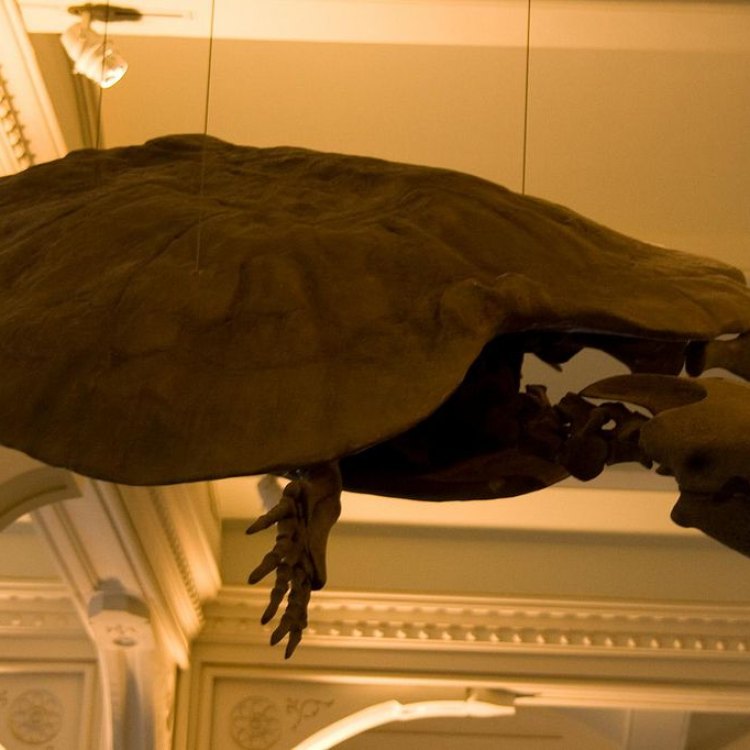
Stupendemys
- Adult Size: Large
- Average Lifespan: Unknown
- Reproduction: Oviparous
- Reproductive Behavior: Unknown
- Sound or Call: Unknown
- Migration Pattern: Unknown
- Social Groups: Unknown
- Behavior: Unknown
- Threats: Habitat loss, illegal hunting, and climate change
- Conservation Status: Extinct
- Impact on Ecosystem: Unknown
- Human Use: None
- Distinctive Features: Giant size, shell with horned projections
- Interesting Facts: Stupendemys is one of the largest freshwater turtles that ever existed. It had a massive size and a shell with horned projections. Fossils suggest that it was a herbivorous turtle, feeding on plants in freshwater environments. Stupendemys lived during the Miocene epoch, approximately 8 to 5 million years ago. The species is believed to have gone extinct due to a combination of habitat loss, illegal hunting, and climate change. Fossils of Stupendemys have been found in Venezuela and Brazil.
- Predator: Unknown
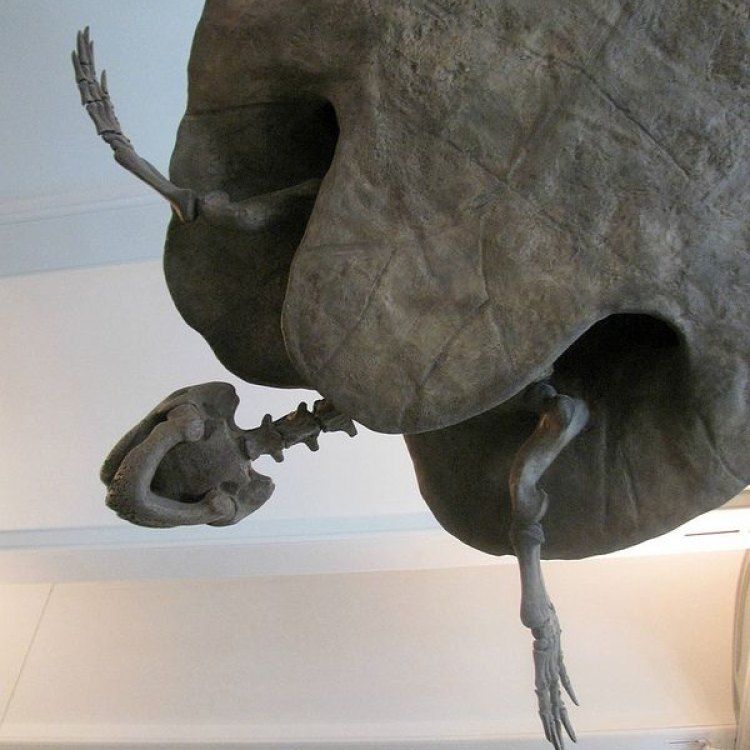
Stupendemys geographicus
The Stupendous Stupendemys: A Giant Turtle Like No Other
In the animal kingdom, size often determines power and dominance. From the colossal blue whale to the mighty African elephant, these giant creatures are revered for their imposing stature. In the prehistoric world, one of the largest freshwater turtles to ever exist reigned supreme - the Stupendemys.With an adult size of over 8 feet long and a shell with horned projections, the Stupendemys was an impressive and fascinating creature PeaceOfAnimals.Com. Despite its prominent presence during the Miocene epoch, which lasted from approximately 23 to 5 million years ago, we know very little about the behavior and habits of this prehistoric reptile.
But with the discovery of fossils in Venezuela and Brazil, scientists have pieced together a picture of this mysterious giant turtle and its role in the ancient ecosystem. Let's dive deeper into the world of Stupendemys and explore what makes it a truly stupendous creature.
The Enormous Size of Stupendemys
One of the most striking features of Stupendemys was its sheer size. As mentioned earlier, an adult Stupendemys could grow to be more than 8 feet long, making it one of the largest freshwater turtles in history. To put that into perspective, that's about the size of a small car!Imagine coming across a 2.4-meter-long turtle in a freshwater environment - it would certainly grab one's attention. And that's not all; the shell of Stupendemys was also remarkably large, measuring up to 10 feet in diameter. This massive size would have made it a formidable presence in its natural habitat Silken Windhound.
The Horned Projections on Its Shell
Aside from its impressive size, Stupendemys was also known for its distinctive shell. Unlike most turtles with a smooth, round shell, Stupendemys' shell had horned projections on the edges. This feature not only added to its already formidable appearance but also served a practical function.The horns on the shell would have acted as a form of protection, making it difficult for predators to flip over the turtle. It was also believed that the projections could have been used during mating rituals, making Stupendemys stand out in a sea of turtles.
A Herbivorous Diet in Freshwater Environments
If you were to come across a massive turtle in a freshwater environment today, the first thought that would come to mind is that it's a carnivore. However, Stupendemys was a herbivore, primarily feeding on plants found in rivers and lakes.Scientists have found evidence of this by studying the turtle's teeth, which had a unique shape adapted for grinding vegetation. This also indicates that Stupendemys preferred to stay in aquatic habitats, foraging for food in the water.
Extinction of Stupendemys
Despite being a dominant species during the Miocene epoch, the Stupendemys eventually met its demise. Fossils of this giant turtle have only been found in Venezuela and Brazil in South America, leading scientists to believe that they were endemic to this region.But the question remains, what caused the extinction of Stupendemys? There are a few theories, and the most plausible explanation is a combination of factors. Habitat loss due to changes in the climate and the encroachment of humans is believed to have played a significant role in the extinction of this species. Illegal hunting for its meat and eggs could have also contributed to its decline.
Impact on the Ecosystem
Despite its massive size, the exact role of Stupendemys in the ancient ecosystem remains a topic of debate. It is believed that as a herbivore, it would have played a crucial role in maintaining the balance of freshwater environments by controlling the growth of plants.However, with its extinction, we can only speculate on the implications it may have had on the ecosystem. Without this giant turtle, there may have been a decrease in plant-eating species, leading to changes in the ecosystem and possible effects on other species lower down in the food chain.
Human Use and Conservation Status
Unlike other prehistoric creatures like dinosaurs, the Stupendemys did not have any known use for humans. It is believed that they were a food source for ancient humans, but there is no evidence to back this up.Today, Stupendemys is listed as "extinct" on the International Union for Conservation of Nature's Red List. Due to its large size and unique features, it has become a valuable discovery for paleontologists, providing insight into the ancient world and the creatures that lived in it.
Conclusion
When it comes to giant creatures, the Stupendemys is definitely one for the books. With its impressive size, distinct shell, and herbivorous diet, it was a fascinating and unique creature in the prehistoric world. However, due to a combination of factors, this giant turtle is now extinct, leaving behind only fossils to tell its story.But with ongoing discoveries and research, we may one day uncover more about the behavior and lifestyle of Stupendemys. For now, it remains a marvel of the animal kingdom and a testament to the diversity and wonder of our planet's past.
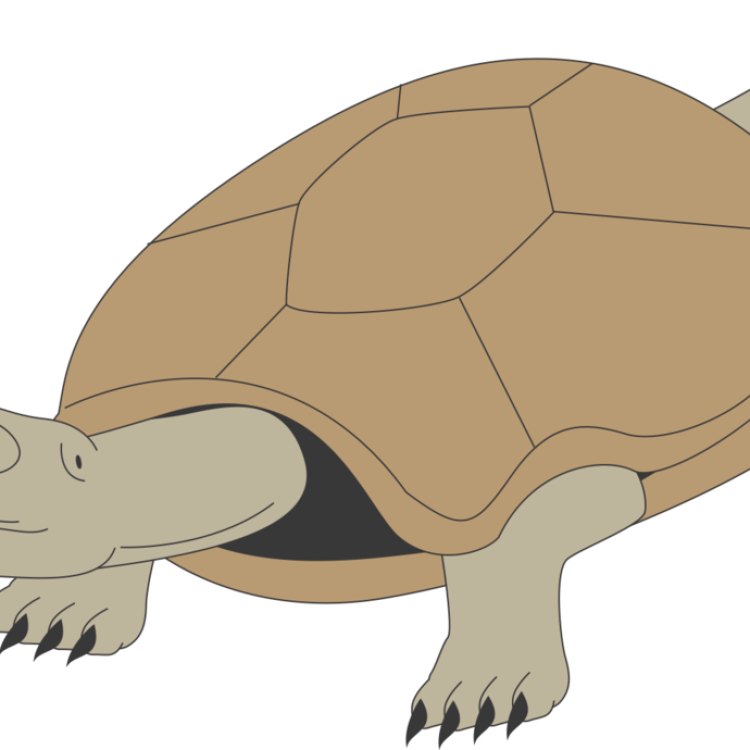
The Unforgettable Stupendemys: A Giant Turtle from Ancient South America
Disclaimer: The content provided is for informational purposes only. We cannot guarantee the accuracy of the information on this page 100%. All information provided here may change without prior notice.


